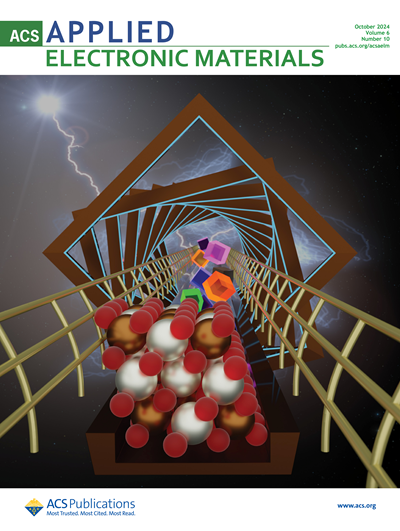Phytochemistry and Allelopathic Effects of Tanacetum vulgare L. (Tansy) Extracts on Lepidium sativum L. (Garden Pepper Cress) and Lactuca sativa L. (Lettuce)
IF 4.7
3区 材料科学
Q1 ENGINEERING, ELECTRICAL & ELECTRONIC
引用次数: 0
Abstract
Tanacetum vulgare is a perennial plant growing wild along roadsides, pastures, and agricultural fields. Its prevalence is due to several factors: good climatic adaptability, high self-seeding potential, phenotypic plasticity, multiplying via underground rhizomes and its allelochemicals, which influence the seed germination, root development and the overall vegetation of the surrounding plants. The phytochemistry of tansy extracts and their allelopathic activity on the seed germination and growth of garden pepper cress (Lepidium sativum L.) and lettuce (Lactuca sativa L.) were investigated. The major volatile compounds, 1,8-cineole, camphor and borneol were determined in tansy flower extracts. The leaf extracts contained appreciable amounts of 1,8-cineole and borneol. Feruloylquinic, (di)ferulic and dehydrocaffeoyl-5-caffeoylquinic acids, acacetin, ludovicin С and tanacetin were determined both in leaf and inflorescence extracts. Root extracts contained minor quantities of some terpenoids and polyphenols. Extracts of T. vulgare’s aerial parts showed strong allelopathic effects on model plants. The flower and leaf water extracts inhibited lettuce and pepper cress seed germination and growth the most. According to the fractions, the acidic solution had the strongest effect, followed by neutral and alkaline solutions. At the highest relative concentrations of 0.5 and 1.0 tansy leaf acidic fraction, lettuce seed germination and growth decreased by 89.93% (from 35.07 ± 4.79 to 3.53 ± 2.10 mm) and by 98.46% (from 35.07 ± 4.79 to 0.57 ± 0.98 mm) compared to the control, respectively. Tansy root extracts showed weak effects. Our results demonstrated that the allelopathic inhibitory potential of tansy extracts was higher on garden pepper cress than on lettuce. The presence of allelochemicals in T. vulgare may have a significant impact on plant communities and ecosystems.丹参(Tanacetum vulgare L.)提取物对莴苣(Lepidium sativum L.)和莴苣(Lactuca sativa L.)的植物化学和别位效应
虎耳草是一种多年生植物,野生于路边、牧场和农田。它的盛行有几个因素:良好的气候适应性、高自播潜力、表型可塑性、通过地下根茎繁殖以及它的等位化学物质影响种子萌发、根系发育和周围植物的整体植被。研究了丹参提取物的植物化学性质及其对园椒(Lepidium sativum L.)和莴苣(Lactuca sativa L.)种子萌发和生长的等位疗法活性。测定了丹参花提取物中的主要挥发性化合物 1,8-蒎烯、樟脑和龙脑。叶提取物中含有相当数量的 1,8-松油醇和龙脑。叶片和花序萃取物中都检测到了阿魏酰奎宁酸、(二)阿魏酸和脱氢咖啡酰-5-咖啡酰奎宁酸、乙酰乙酸苷、Ludovicin С 和丹宁酸。根提取物中含有少量萜类化合物和多酚。T.vulgare的气生部分提取物对模型植物有很强的等位效应。花和叶的水提取物对莴苣和辣椒芹种子发芽和生长的抑制作用最强。根据馏分的不同,酸性溶液的作用最强,其次是中性和碱性溶液。在相对浓度最高的 0.5 和 1.0 丹参叶酸性馏分中,与对照相比,莴苣种子的萌发和生长分别降低了 89.93%(从 35.07 ± 4.79 mm 降低到 3.53 ± 2.10 mm)和 98.46%(从 35.07 ± 4.79 mm 降低到 0.57 ± 0.98 mm)。丹参根提取物的作用较弱。我们的研究结果表明,丹参提取物对园椒芹的等位抑制潜力高于对莴苣的抑制潜力。丹参中存在的等位化学物质可能会对植物群落和生态系统产生重大影响。
本文章由计算机程序翻译,如有差异,请以英文原文为准。
求助全文
约1分钟内获得全文
求助全文
来源期刊

ACS Applied Electronic Materials
Multiple-
CiteScore
7.20
自引率
4.30%
发文量
567
期刊介绍:
ACS Applied Electronic Materials is an interdisciplinary journal publishing original research covering all aspects of electronic materials. The journal is devoted to reports of new and original experimental and theoretical research of an applied nature that integrate knowledge in the areas of materials science, engineering, optics, physics, and chemistry into important applications of electronic materials. Sample research topics that span the journal's scope are inorganic, organic, ionic and polymeric materials with properties that include conducting, semiconducting, superconducting, insulating, dielectric, magnetic, optoelectronic, piezoelectric, ferroelectric and thermoelectric.
Indexed/Abstracted:
Web of Science SCIE
Scopus
CAS
INSPEC
Portico
 求助内容:
求助内容: 应助结果提醒方式:
应助结果提醒方式:


